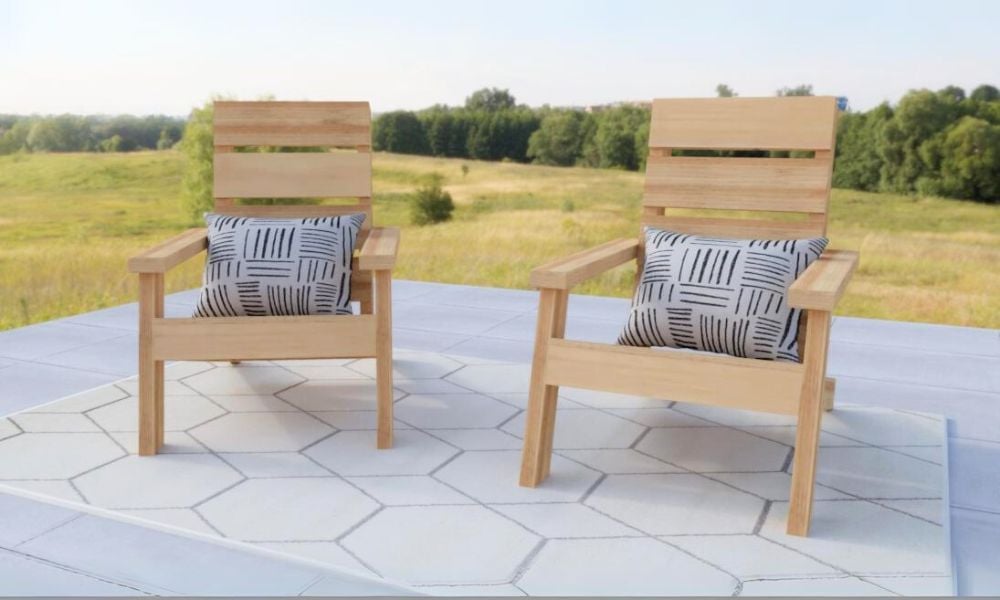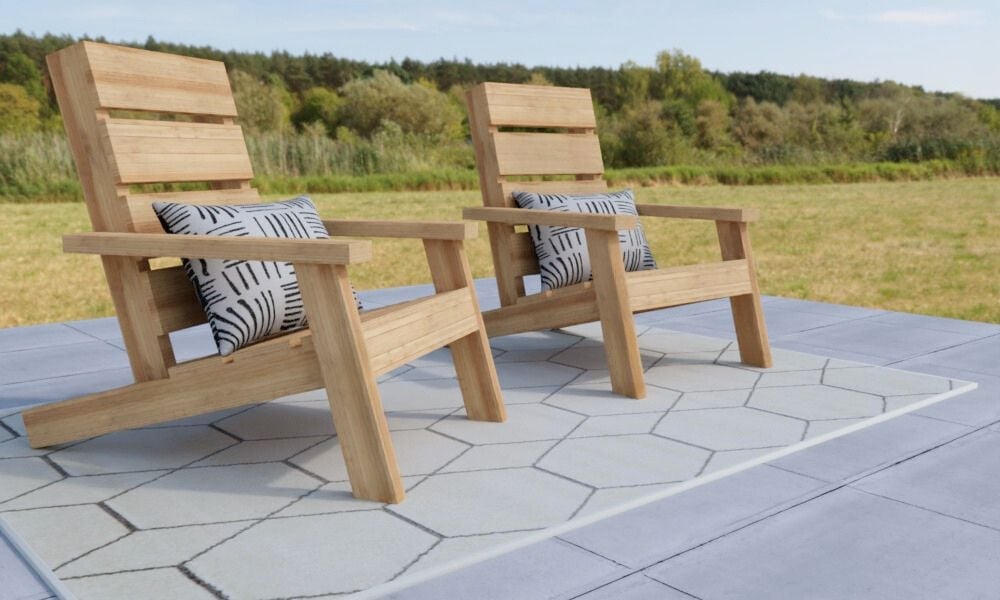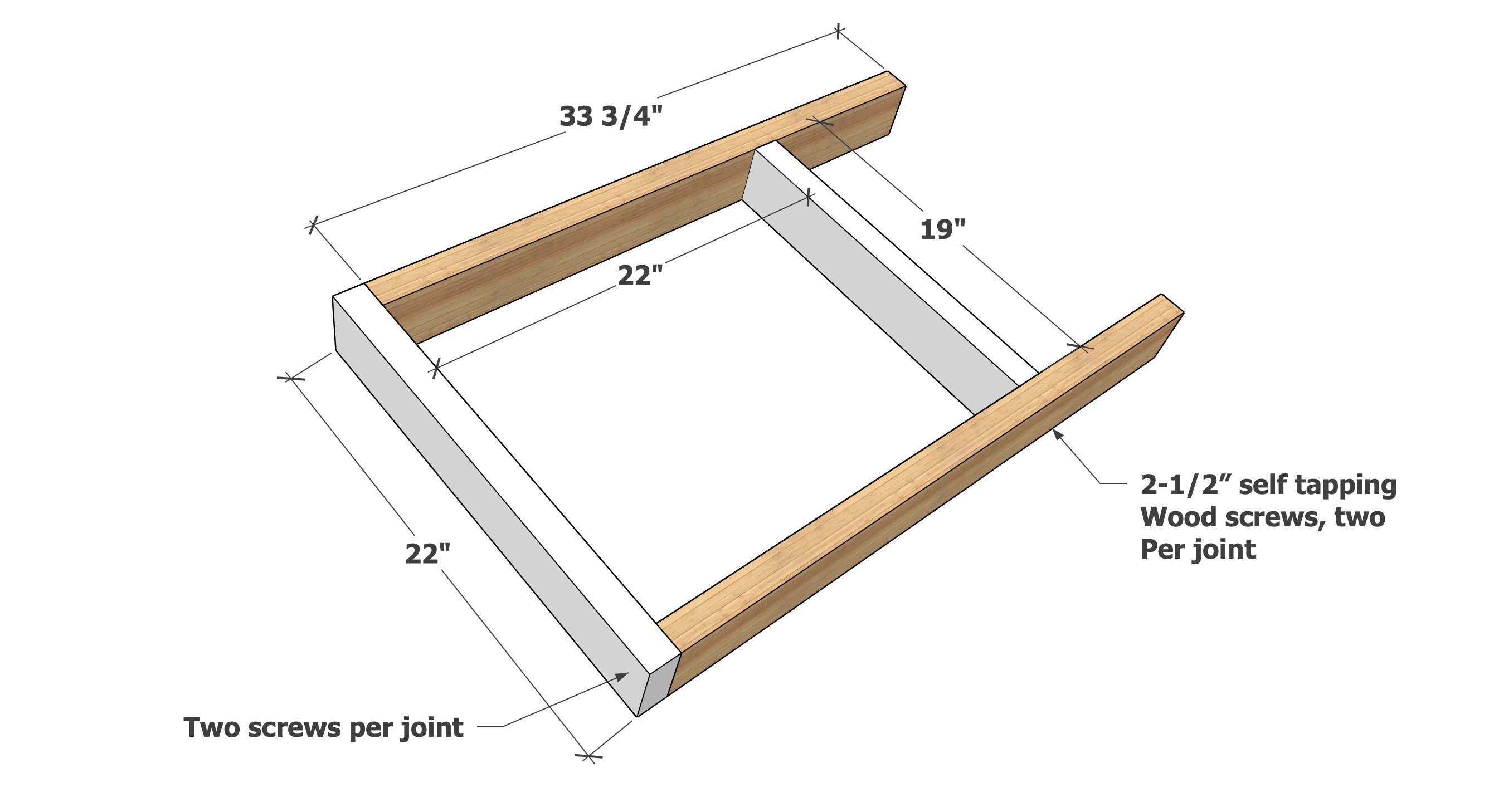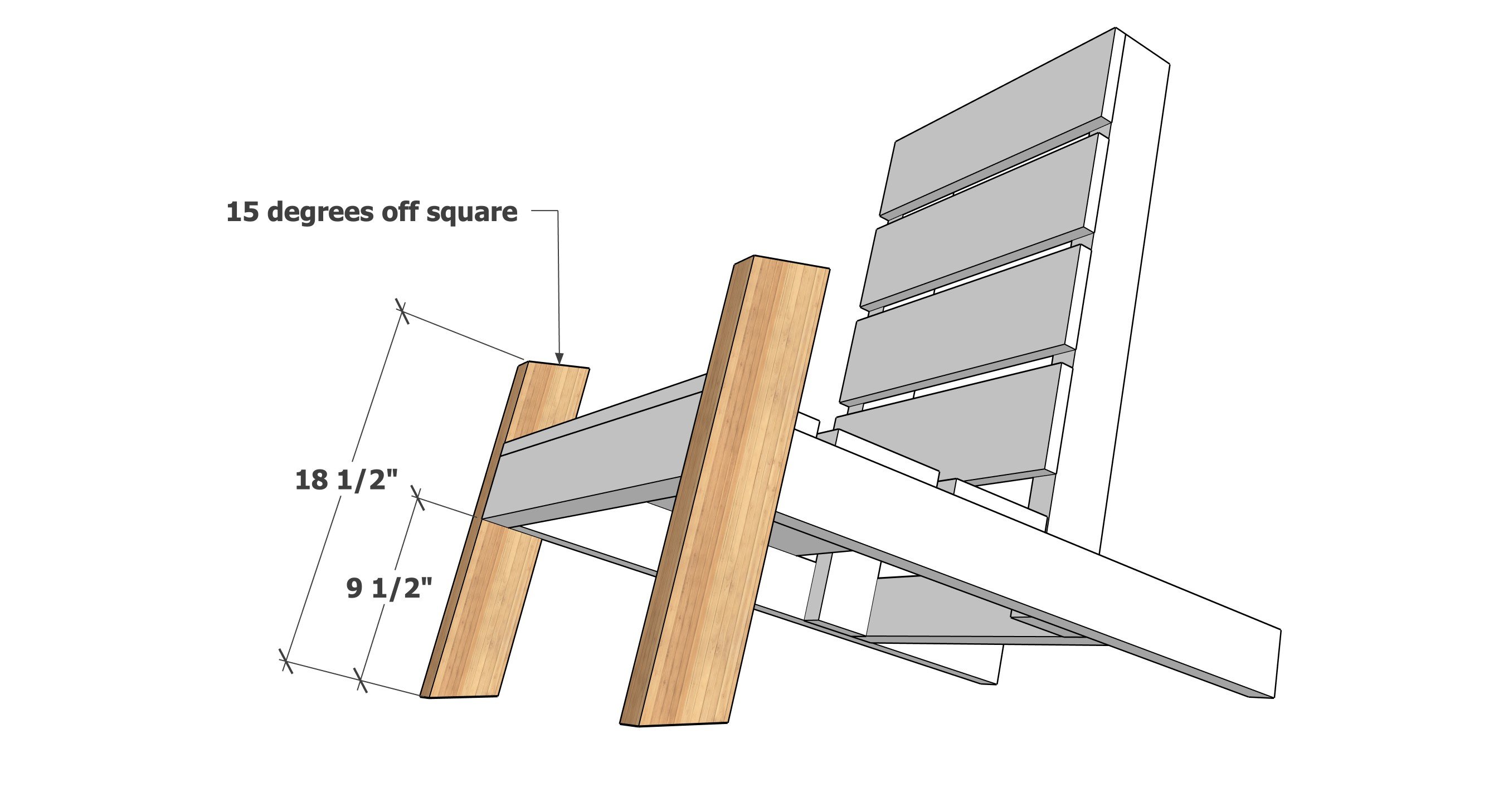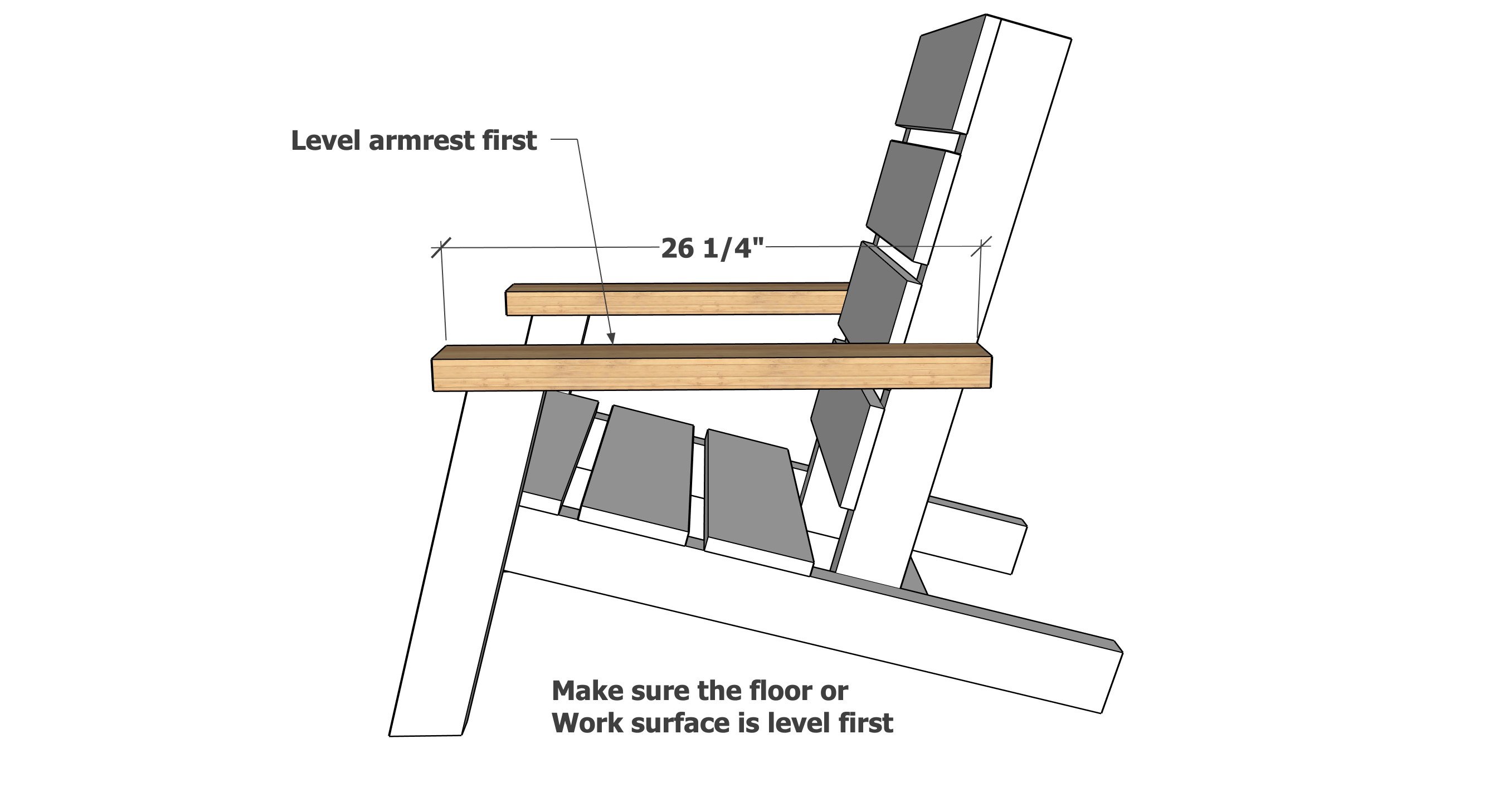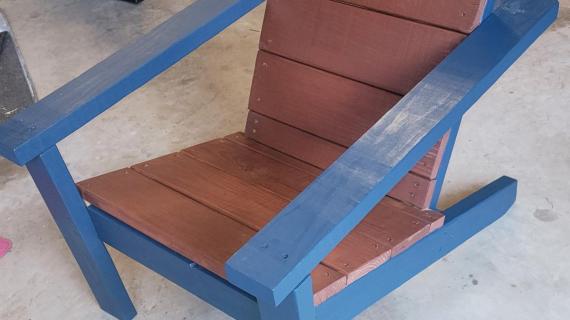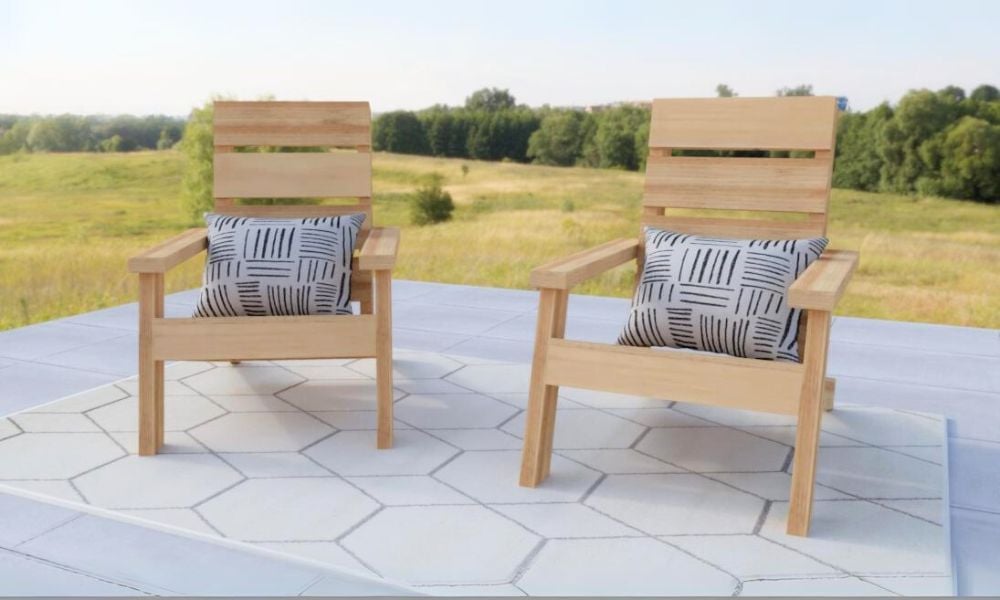
Easy to build, comfortable, strong, sturdy, inexpensive and durable, we call this Adirondack chair our "Ultimate" because it delivers on all the levels! Even a beginner woodworker can build these amazing outdoor chairs.
This plan is easy to customize, to suit different sized cushions, or for size preferences.
Build today with our free, step by step project plans with free PDF (click here to start download of one page PDF Plan), video tutorial and shopping and cut lists from Ana-White.com
Pin For Later!

Dimensions
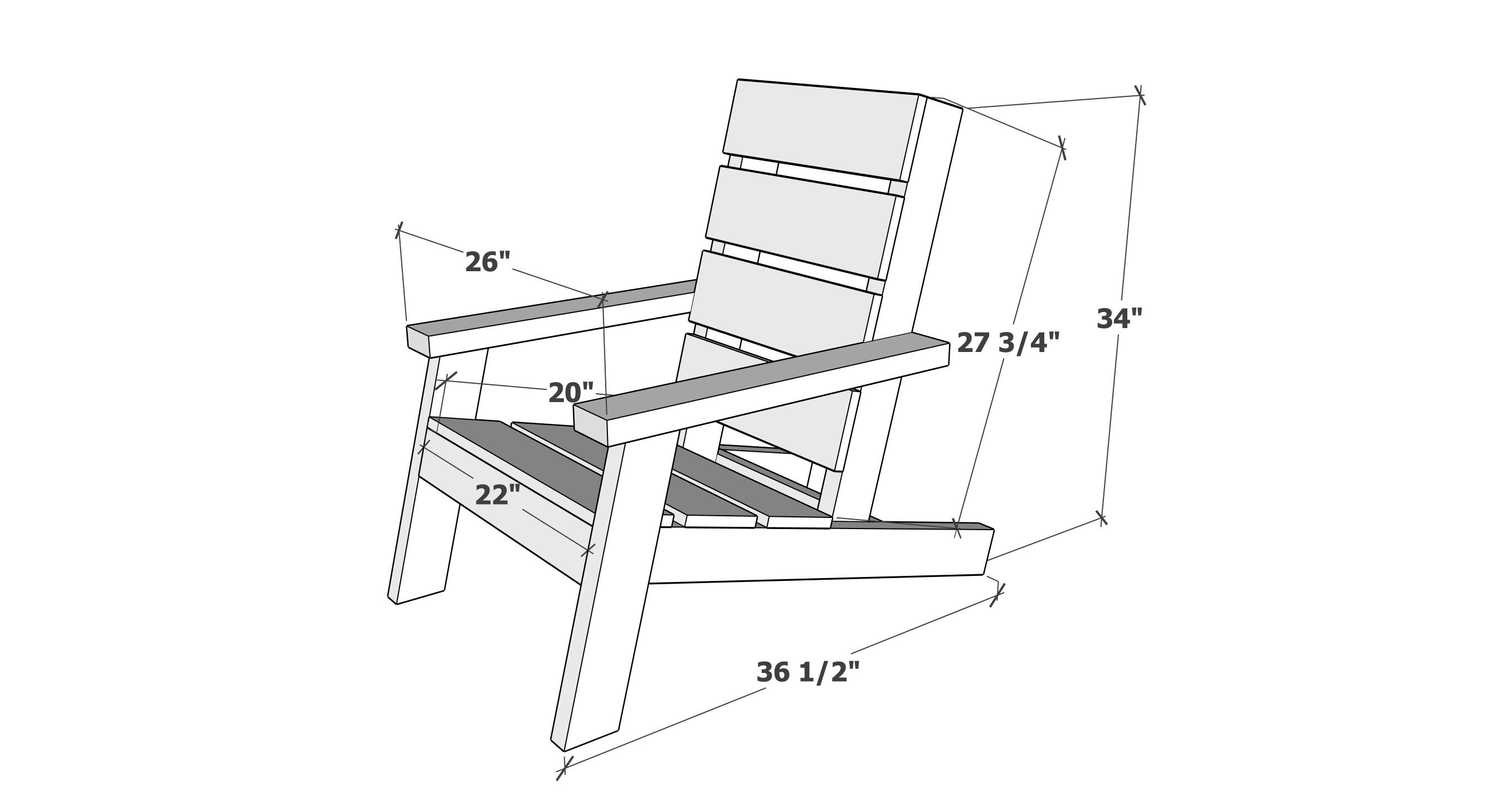
Dimensions for Adirondack Chair in diagram, as shown seat is 22" wide x 20" deep
Preparation
Shopping List
- 3 - 2x4 @ 8 feet long
- 1 - 1x6 @ 12 feet long *
- 1-3/4" and 2-1/2" self tapping exterior wood screws
Cut List
- 2 - 2x4 @ 33-3/4" - seat stringers
- 1 - 2x4 @ 22" - front seat apron
- 1 - 2x4 @ 19" - seat back support
- 3 - 1x6 @ 22" - seat boards
- 2 - 2x4 @ 32" - back supports
- 4 - 1x6 @ 19" - back boards
- 2 - 2x4 @ 18-1/2" - long point to short point measurement, both ends cut at 15 degrees off square, ends ARE parallel
- 2 - 2x4 @ 26-1/4" - arm rests
Instructions
Step 1
Step 2
Step 3
Step 4
Step 5
Finishing Instructions
Preparation Instructions
For the finish, I recommend filling all screw holes with an exterior wood filler. Overfill the holes and let dry.
Sand off excess until smooth.
Remove all sanding residue.
Sand off excess until smooth.
Remove all sanding residue.
Finish Used
I recommend an exterior penetrating stain, similar to a stain you could use on a fence.
Make sure you stain the bottoms of the legs to prevent moisture damage at the feet.
Maintenance - Every spring, clean and tighten any screws. Add a coat of exterior penetrating stain if needed (about every 5 years).
Make sure you stain the bottoms of the legs to prevent moisture damage at the feet.
Maintenance - Every spring, clean and tighten any screws. Add a coat of exterior penetrating stain if needed (about every 5 years).
Project Type
Room



